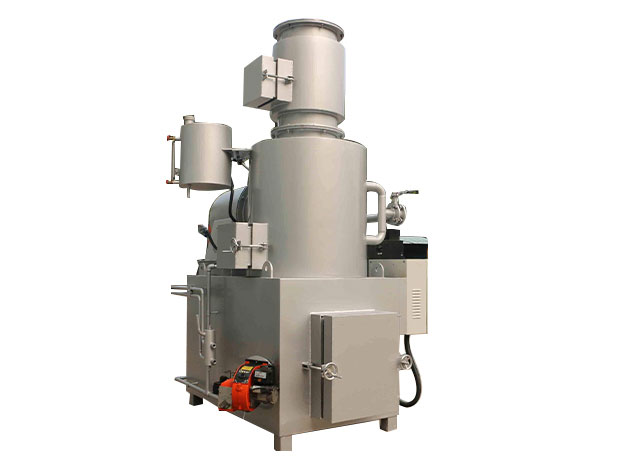Rotary kiln-type incinerators are rotary kilns, which pass through a cylindrical metal shell placed on a slightly inclined level.
Refractory bricks are built in the body to complete the structure, and the garbage (solid, gas, and liquid) is evaporated and volatilized in the rotary kiln.
The process of precipitation, ignition and combustion. After the rotary kiln is equipped with a secondary combustion chamber, the garbage is decomposed in the rotary kiln
The combustible gas produced by gasification achieves complete combustion in the secondary combustion chamber. By rotary kiln, secondary combustion chamber and attached
The equipment constitutes a complete rotary kiln combustion system
The temperature in the rotary kiln system is controlled at 850~950℃, and the residence time of garbage in the rotary kiln is about 1h.
The temperature of the secondary combustion chamber is controlled at 1100℃, and the residence time of the flue gas in the secondary combustion chamber is longer than 2s to ensure that it enters
The garbage in the burning system can be fully burned, and the volatile and harmful substances in the flue gas are particularly carcinogenic.
Sexual dioxins are fully burned to achieve the goal of harmlessness.
2.Refractory Materials for Rotary Kiln Waste Incinerator
Rotary kiln
Working conditions of rotary kiln
Although the rotary kiln waste incinerator uses rotary kiln equipment, the working conditions and the composition of the materials entering the kiln are stable.
Cement rotary kilns with mature and stable thermal systems are completely different.
The temperature in the rotary kiln waste incinerator is not less than 800℃, and the waste is fully burned and burned in the continuous advancement.
Decomposition, and the dust in the flue gas will grind and wash the kiln lining; the alkali (potassium, sodium),
Halogen (chlorine, fluorine) and sulfur compounds form strong chemical attack on kiln lining materials;
In the case of unstable rotating operation, the kiln lining material is prone to frequent changes in temperature and chemical erosion of the atmosphere in the kiln.

Cracking and peeling occur under the action.
Therefore, refractory materials for rotary kilns need to have the following characteristics:
(1) High temperature resistance, it can operate stably in the environment above 800℃ for a long time.
(2) High strength and good wear resistance, resistance to rubbish waste and flue gas dust.
(3) Low porosity and good chemical stability, resist the penetration and erosion of chemical substances in the flue gas in the kiln.
(4) Good thermal shock stability, withstand the alternating thermal stress under incineration conditions.
(5) Good volume stability at high temperature, avoiding damage caused by mechanical stress of the kiln body.
Refractory Materials for Rotary Kiln
Considering the working environment of the rotary kiln and the performance requirements of refractory materials, the refractory materials used for kiln lining mainly include high alumina bricks, mullite bricks,
silicon carbide bricks, silica bricks, chromium corundum bricks and chromium corundum castables (plastics), etc.,
Mullite castables can be used in the kiln mouth and other parts


